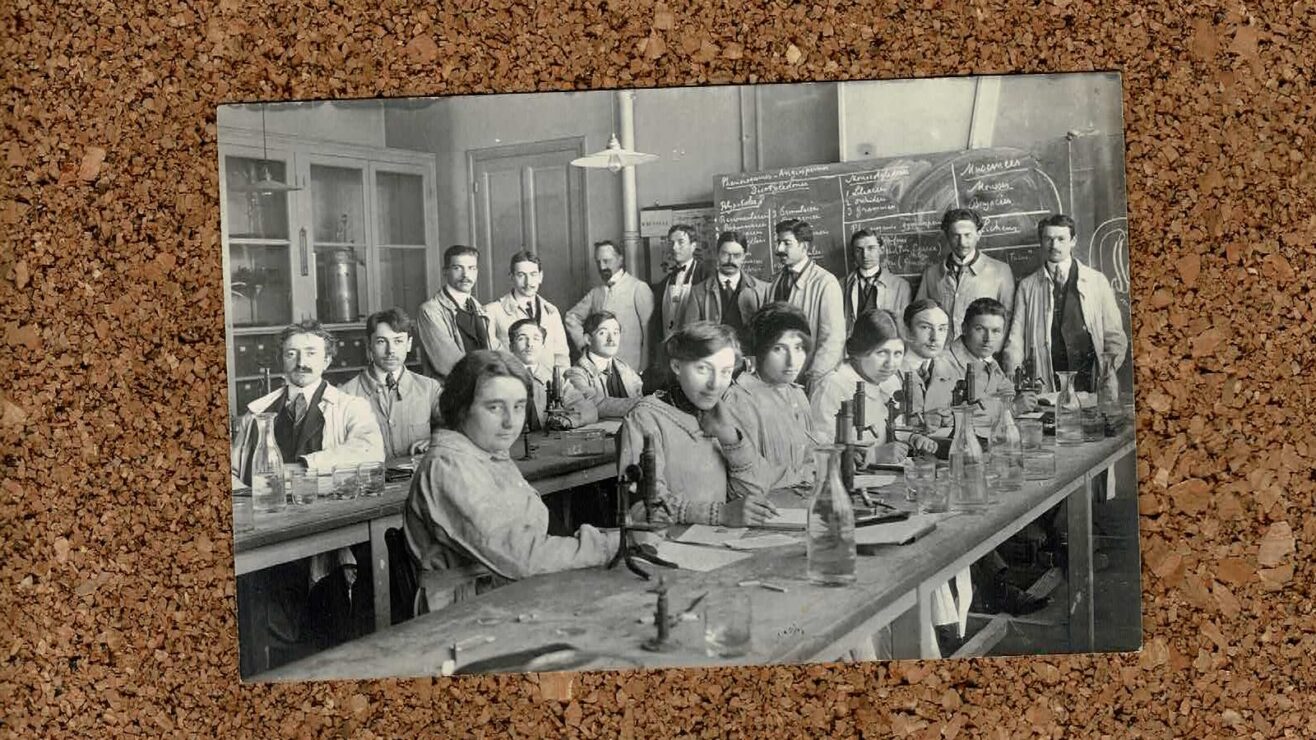A lot of the problems with the way that higher education is perceived seem to be assumed to be down to poor communication.
If we take the row about “blended learning”, the picture painted by the press seems to be one of greedy vice chancellors pandering to snowflake staff by forcing cheap-as-chips “Zoom uni” on students, despite the fact that the government now doesn’t require it for public health reasons – and making up for it by giving out “good honours” like sweeties.
In the other corner there’s the benign vice chancellor, coping on the same undergraduate tuition fee as was allowed in September 2017 yet somehow absolutely not using this as a way to save money and in fact delivering an exciting new future that actually costs more to deliver and solves all of the previous problems with accessibility at the same time as delivering an even better teaching and learning experience (that nevertheless won’t result in any improvements or “inflation” to grades, promise).
That neither of the pictures are as simplistically (or consistently) true as each side makes out is hardly the point. When Gavin Williamson is dragged into the conversation to rattle his little in-person teaching sabre, all he’s doing is responding to what the press are interested in that the press knows its readers are interested in – an oversimplified caricature of what can go wrong in higher education imbued with the Brideshead assumptions and cliches we all know well.
Some people, by the way, wish that the Secretary of State would do some of the sector’s explaining for it rather than joining in with the pile-on. Those people should be careful what they wish for.
The resultant assumed answer to the blended row has been to do that thing that academia does well – to explain it all better. The idea seems to be to point out that behind the simplicity there is diversity and complexity. But even as the sector has belatedly moved in that direction, I’ve detected both cynicism and disbelief from some quarters. After last summer, lots of students simply don’t trust the sector. So what’s causing that schism, and is there a sensible way to build back that trust as we approach a risky comprehensive spending review season for the sector?
Imagination is all I want from you
Let’s imagine that you’re a student going into the third year of your undergraduate humanities degree. For both semesters of the year, you’re enrolled onto four modules, each of which carries with it a large lecture and a small group seminar. Some modules carried some additional hours and activities – but at the core, that was your experience in Year One.
- Post-pandemic, let’s imagine that some of the students in that situation will be returning to providers that will simply revert to what was done pre-pandemic, although the lectures will now be more likely to be also recorded than they were in 2019. Let’s call this the “return to normal” option.
- Let’s then imagine that some students will be returning to four hours of seminars a week and a box set of (last year’s) pre-recorded lectures to watch at their convenience, with less actual access to academics because of the over recruitment of the examnishambles. Let’s call this the “universities are a scam” option.
- Then let’s assume that some will be returning to something that somehow fits an “80% in-person” decree from Senate/Academic Board and consists of a new mix of more asynchronous materials than were issued in the past, but slightly less in-person teaching than used to be delivered, with some extra optional group study sessions with other humans. Let’s call this the “meet George Jetson” option.
If you’re someone that’s cynical about universities, when you hear something vague you assume the “universities are a scam” option. If you’re someone that’s optimistic about universities (or whose job it is to exude optimism about universities), you see George Jetson’s shiny edtech spaceships. No wonder people grasp for the past.
One problem is that all three of the above answers are floating around as actual plans in the sector right now, all three could fit the “blended” bill, nobody can definitively or even satisfactorily answer the question “which of these is unacceptable”, and the precise version for a given student on a given programme is genuinely difficult to pin down.
You also have a distributed leadership problem – of the “centre” decreeing one thing and something quite different happening “on the ground”, for all the reasons we have rehearsed previously.
And there are incentives and pressures – of the pandemic manifesting in difficult discussions with trade unions over space and social distancing models, the over-recruitment generated by the examnishambles, and a pressure to not make too many clear commitments – because in the absence of clarity over what might be regarded as the “new minimum”, and in the absence of any particular need to compete over delivering more than that, the legally safest thing to do is promise as little as possible.
All of which raises the question – what then, in the end, causes the line to be drawn – between taking half of the delivery and replaying last year’s youtubes and nothing else to generate some efficiencies, and the kind of “meet George Jetson” future being sold in descriptions like this?
A pocketful of dreams
I get asked a lot about what a provider can and can’t do when it comes to changes being made to provision for returning undergraduates, and the picture is interesting. Students complaining about getting more isn’t the issue – it’s what they lose in any change that matters.
OfS says that it is concerned about two key things in the year ahead. Firstly, that students receive high quality teaching after the disruption of the pandemic, and secondly that universities deliver on the teaching that students have been promised. Where this is not the case, it reminds providers that it has powers to intervene.
That doesn’t mean that OfS is taking a blanket stance against online lectures per se, which it says it knows can have benefits for students when they are designed effectively as part of a wider approach to learning and teaching. It does mean that students should receive teaching in the way that they have been promised, or “they should agree to proposed changes where these are material”. Within this context, OfS says that making use of online learning may be acceptable.
It reminds us that it has already made clear that providers should communicate with students clearly and in good time as to what they can expect when the new term begins, make clear to students what plans they have for face-to-face teaching, what may be delivered online, and how this balance could change if coronavirus restrictions are re-introduced.
At the beginning of the pandemic – and to some extent for much of the period to now – providers have in part argued that changes to delivery have been necessary because of public health reasons, allowing many to invoke clauses in their university-student contract that allow variations where circumstances generate problems or restrictions outside of a university’s control – so called “force majeure” clauses.
Both OfS and the Office of the Independent Adjudicator (OIA) argued last summer that providers probably couldn’t rely on unilateral variation clauses because they’d had time to adjust. Both said that providers should seek “consent” for changes – and that tended to mean providers warning students about what could happen, and telling students that the act of re-enrolling in and of itself represented acceptance of revised terms/provision.
So now that the “cover” provided by government guidance for changes being necessary for public health reasons is gone, to what extent do providers need to deliver what was originally promised to a student – particularly where that promise included their contact hours being “face to face”?
Despite what many in the sector would want students to believe, the delivery method of teaching is a “material” matter. In its 2015 guidance, CMA includes the following in its list of what it expects students will have been provided with up front:
Information about the composition of the course and how it will be delivered, and the balance between the various elements, such as the number and type of contact hours that students can expect (for example, lectures, seminars, work placements, feedback on assignments), the expected workload of students (for example the expected self-study time), and details about the general level of experience or status of the staff involved in delivering the different elements of the course.
This all means that providers have to therefore think about what has been promised and when – any of the material information about the provision given “pre-contract” must be accurate, because:
The pre-contract information will be binding on you where a prospective student subsequently accepts an offer. For example, pre-contract information is likely to be set out on your website or course pages, or in your prospectus. The CCRs say that if any of this information does change before the contract is agreed, you need to get the student’s express agreement to the change.”
So first, you’ve got to ask if the thing students feel has been lost in any change (like “face to face lectures”) was ever promised. The next question is then whether a provider can use any variation clause it has in its university-student contract to vary what is provided – on the basis that if the consumer (student) doesn’t like what’s being proposed, they can switch to another university or just walk away without loss. If you’re a student that’s already rented a house – or a commuter student who can’t attend another university – it’s not at all clear that either the notice or the right to cancel would be enough to enable the student to take a decision in their best interests.
You’ll note though that the bit that really matters in all of the above is the original promise – and very few students will be (re)enrolling in September with the kind of clarity of promise under their belt that would allow them to enforce it. In other words, even in the “universities are a scam” scenario, how many universities would have explicitly promised those lectures live and in-person?
I promised myself
Currently, the information available to support student choice is inadequate because it is not always sufficiently detailed about the things that matter to students, and is not always structured in a way that allows students to make meaningful comparisons between different providers and courses.
This means that students do not consistently have the information, advice and guidance they need to make good choices about what and where to study, and this is particularly the case for students from disadvantaged backgrounds who may not have access to the same levels of support and guidance as their peers, and also for other groups of students such as mature learners.
The legal relationship between students and providers is unequal and there are examples of where terms and conditions are unclear or unfair. This means that students are not clear about what they are getting into, in terms of quality, contact time, support, and so on, and are not clear about the direct and indirect costs of their programme and wider experience. It also means that students are placed at a disadvantage because terms are designed to favour the provider.
It is then not easy for students to identify instances where they have not received what they were promised and to seek redress. This means that students’ rights are not enforced when what they have been promised, in terms of quality, contact time, support, and so on, is not delivered. And we should also consider whether a model that relies primarily on individual students challenging a provider for a breach of contract places a burden on students in an undesirable way.
I don’t think that many people would disagree with the content of the four paragraphs above – and what’s interesting is that these were conclusions drawn by OfS pre-pandemic in a paper to its board on student (consumer) rights. There’s also no reason to believe that any of the issues identified in the above four paragraphs will have got any better during the pandemic – and with CMA in “hide under some coats” mode over higher education, as well as fixing the redress and awareness-of-rights issues, OfS now needs to step up to the plate on the “promises” stuff – but with support from the sector.
Go compare and contrast
First, we should look again at some of the things that would be helpful to compare. That, for example, staff student ratio calculations aren’t generally available for all to see at subject level hides courses so small that they look vulnerable, and courses so stretched that delivering something as quaint as a “personal tutor system” is more pipe dream than policy. We do need some numbers to compare – but on the inputs and outputs, rather than the outcomes.
On courses, we ought to see much more granularity on what will and won’t be delivered, how it will be delivered, the equipment and settings available to deliver it, and the depth and breadth of choice that students are likely to experience. That need not mean rules preventing the updating of knowledge – but it should mean protection for students who see optional learning pathways at open days that then disappear two years later.
We should be much clearer with students about the facilities on offer – and their likely ability to access them. Does the multi million pound study space get pinchy at exam time? There’s a lovely gym – but how much does it cost, and will that cost go up?
Then we should identify some of the policies and services that aren’t explicitly about “course content” that current students say matter – and cause there to be some publication of them that forms part of the promise. When a university says it has an approach or a policy or a strategy on PGT dissertation supervision, or assessment and feedback, or sexual harassment and assault, or welbeing and mental health, we should be able to see them (and compare them) on Discover Uni, and students should be able to hold universities to them.
You’ll note that what none of the above focuses on is “outcomes”. I’ll not have the debate about how you meaningfully measure and count outcomes again here – there’s plenty enough of that elsewhere on the site – suffice to say that the relative lack of focus on the inputs and outputs is a major problem for students, and is now starting to look like a significant strategic mistake under Michael Barber.
Where we do promise things, or decree things, or decide things, we do need to get better at actually ensuring we deliver them. I meet too many student officers who tell me that policies agreed at a university committees later emerge as mere “ambitions” when delivery issues emerge. That means more time spent ensuring that ideas, solutions and services are deliverable, scalable, properly resourced and monitored before a satisfaction survey says they’re not happening.
Oh and on blended – we urgently need to find ways to deliver something that doesn’t set students who need human contact up in opposition to students who need timetabling flexibility. And just as we need to stop pretending that a packed lecture gives you friends, we also all need to stop suggesting that commuters, parents and disabled students love being at home all the time (and that the closest we’ll ever get to campus and timetabling accessibility is remote learning without closing the digital divide).
Some will say to me – both at programme level and at institutional level – that what I’m suggesting on promises is all very “consumerist” and that the last thing we need is more oppositional sticks for students to beat academics and universities with when they should see themselves as partners.
I understand that view. But higher education is about a long-term relationship, both marriage and civil partnership involves making solemn vows, and the better the promises, the stronger the trust – and the harder it is for staff, students and universities to be badly treated when the savings are suddenly needed.














I really good summary of where we are at. If only there were some clear answers.
I do wonder if any of the not-Boomers will get the George Jetston reference, but it certainly resonated with me. #BoomerAndProud